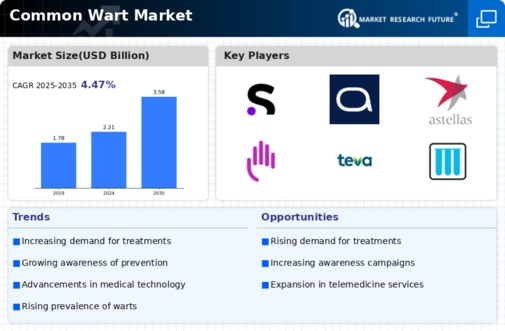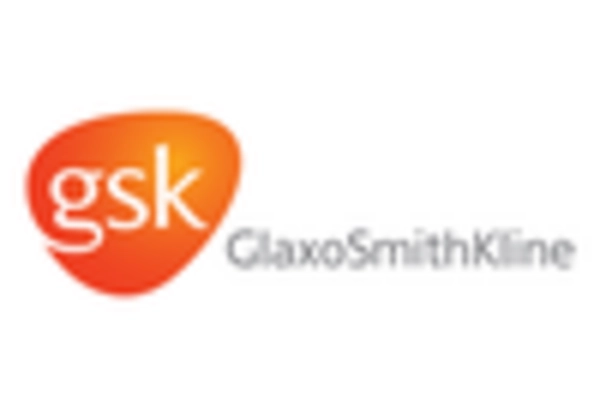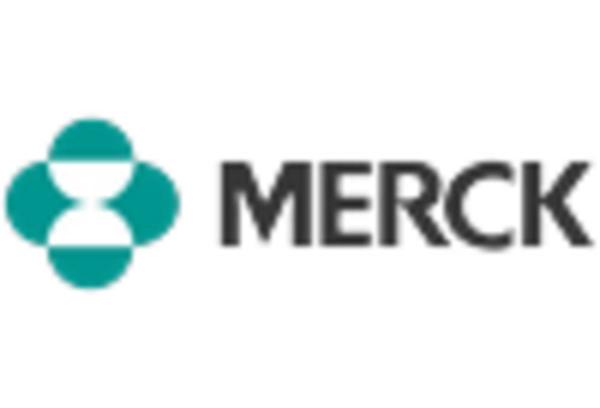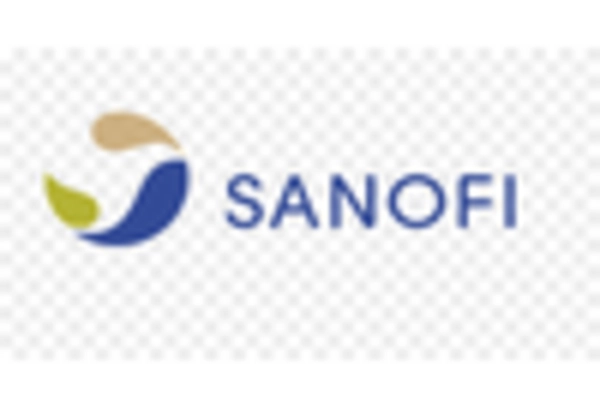The Common Wart Market is characterized by a competitive landscape that is increasingly shaped by innovation, strategic partnerships, and regional expansion. Key players such as Bayer AG (DE), Merck & Co., Inc. (US), and Johnson & Johnson (US) are actively pursuing strategies that enhance their market positioning. Bayer AG (DE) has focused on expanding its dermatological portfolio, which includes treatments for common warts, through both research and development and strategic acquisitions. Merck & Co., Inc. (US) appears to be leveraging its strong research capabilities to innovate new treatment modalities, while Johnson & Johnson (US) is enhancing its market presence through digital health initiatives that aim to improve patient engagement and treatment adherence.
The business tactics employed by these companies reflect a concerted effort to optimize supply chains and localize manufacturing, which is particularly relevant in a moderately fragmented market. This competitive structure allows for a diverse range of products and treatment options, catering to varying consumer needs across different regions. The collective influence of these key players is significant, as they not only drive innovation but also set industry standards that smaller companies may follow.
In August 2025, Bayer AG (DE) announced a strategic partnership with a leading biotechnology firm to co-develop a novel topical treatment for common warts. This collaboration is expected to enhance Bayer's product pipeline and accelerate the time to market for new therapies, thereby reinforcing its competitive edge in the dermatological sector. The partnership underscores Bayer's commitment to innovation and its proactive approach to addressing unmet medical needs in wart treatment.
In September 2025, Merck & Co., Inc. (US) launched a digital platform aimed at educating patients about common warts and available treatment options. This initiative not only positions Merck as a thought leader in patient education but also aligns with the growing trend of digital health solutions. By empowering patients with knowledge, Merck is likely to enhance treatment adherence and improve overall patient outcomes, which could translate into increased market share.
In July 2025, Johnson & Johnson (US) expanded its dermatology division by acquiring a smaller company specializing in innovative wart treatments. This acquisition is indicative of Johnson & Johnson's strategy to bolster its product offerings and tap into niche markets. By integrating new technologies and treatment approaches, the company is poised to enhance its competitive positioning in the common wart market.
As of October 2025, the competitive trends in the Common Wart Market are increasingly defined by digitalization, sustainability, and the integration of artificial intelligence in treatment development. Strategic alliances are becoming more prevalent, as companies recognize the value of collaboration in driving innovation. Looking ahead, it is anticipated that competitive differentiation will evolve, shifting from traditional price-based competition to a focus on technological advancements, innovative treatment solutions, and reliable supply chains. This transition may ultimately reshape the market dynamics, fostering a more sustainable and patient-centric approach to wart treatment.

















Leave a Comment